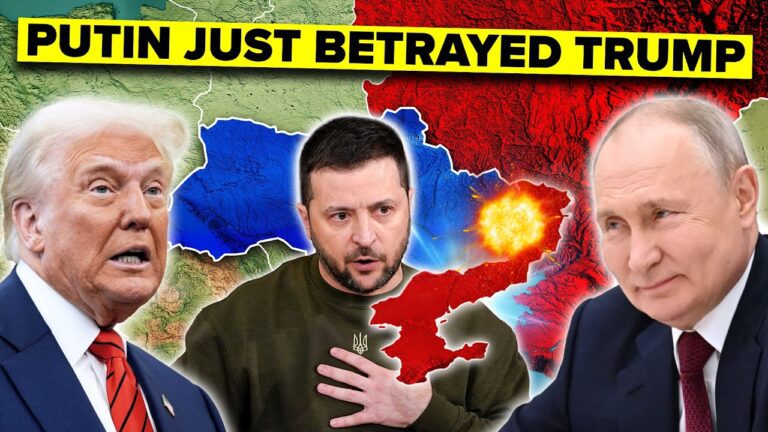Video at the bottom!
In this in-depth exploration, we delve into the turbulent landscape of peace negotiations between Ukraine and Russia, particularly under the Trump administration. Initially, there was hope for a potential ceasefire, with both sides seemingly open to halting hostilities to pave the way for a diplomatic resolution. However, this optimism was swiftly shattered when Russia, led by President Putin, not only ignored the ceasefire but escalated its offensive, leaving Trump’s Cabinet in crisis mode.
Examining the lead-up to Trump’s inauguration on January 20, the video outlines a timeline that reveals a near-total lack of progress on peace negotiations prior to his presidency. Various proposals for ceasefire agreements had been dismissed by either Ukraine or Russia throughout 2022 and 2023. Meetings between the two nations’ representatives failed to reach any consensus, largely due to conflicting perspectives on territorial gains and Ukraine’s unrelenting commitment to reclaim its pre-war borders.
Trump had made confident proclamations about his diplomatic capabilities, citing a long-standing relationship with Putin. In office, he aggressively pursued negotiations, seeking an immediate end to the conflict—even if it meant offering significant concessions to Russia. This shift from the prior Biden administration’s unwavering support for Ukraine raised eyebrows, as Trump’s proposals often appeared to marginalize Ukraine’s interests.
Key developments unfolded, such as U.S. Secretary of Defense Pete Hegseth declaring the return to Ukraine’s pre-2014 borders “unrealistic.” High-level talks in Riyadh between U.S. Secretary of State Marco Rubio and Russian Foreign Minister Sergey Lavrov further illustrated this pivot, sidelining Ukraine from discussions that would fundamentally impact its future.
Contention grew when the preliminary mineral resources agreement aimed at aiding Ukraine’s recovery met with pushback during a contentious Trump-Zelenskyy meeting. The U.S. temporarily suspended military aid, increasing tensions and culminating in a lackluster agreement that mysteriously stalled.
A surprising turn came when a tenuous ceasefire deal was reached. On March 11, Ukraine gave its backing to a 30-day cessation of hostilities, leading Trump to hope for a breakthrough. Yet, just hours after it began, both nations resumed attacks—Russia’s betrayal starkly undermining Trump’s assertive stance and revealing cracks in his strategic approach.
The discussion also highlights influential figures within Trump’s administration, particularly Rubio and tech magnate Elon Musk. While Rubio initially championed hawkish policies, he later aligned with Trump’s more conciliatory approach, leading to strain as both sides struggled to reconcile their interests. Musk, playing a dual role in government efficiency and strategic communications, had initially supported Ukraine but faced criticism for restricting vital support.
The narrative reaches a climax as NATO allies grapple with Trump’s unpredictable foreign policy and the urgency to present a united front in supporting Ukraine. British Prime Minister Keir Starmer’s London Summit stands as an effort to coordinate international support amidst shifting U.S. positions.
As the situation evolves, the video underscores the uncertainty surrounding future negotiations, the feasibility of lasting peace, and the complex dynamics of leadership amidst the geopolitical chess game. As viewers, we’re left contemplating what lies ahead for the U.S. administration and its approach to the ongoing conflict between Ukraine and Russia, emphasizing the need to stay vigilant in tracking developments in this high-stakes diplomatic arena.


